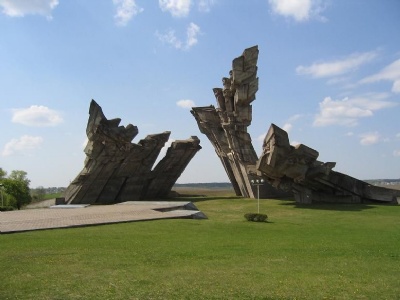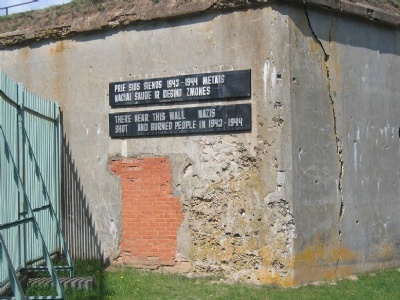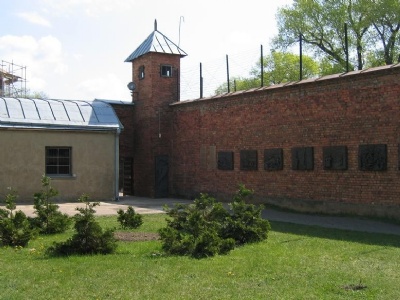Kaunas - Fort IX
Fort IX was one of several forts established around Kaunas as a line of defence and was completed on the night of the outbreak of First World War in August 1914. From 1924 onwards, the fort was a prison. When the Soviet Union occupied Lithuania in 1940, the Soviet political security service took over the fort and imprisoned political prisoners. The fort also served as a staging point for prisoners to be deported to the Gulag in the Soviet Union. When the Nazis occupied Lithuania, SS took over the fort and used it, and other forts, as execution sites. In the seventh fort, about 3,000 Jews were murdered in early July 1941. In August the same year about 1800 Jews and academics were murdered in the fourth fort. However, the largest mass execution of Lithuanian Jews was carried out in the ninth fort and has been called the great action (Die Grosse Aktion).
On October 28, Scharführer Helmut Rauca, from Kaunas Gestapo, conducted a selection of about 9,000 Jews from the ghetto. These were brought to the ninth fort and murdered next day. This is equivalent to one third of the ghetto’s inhabitants. In november the same year, more than 1200 jewish women and children were murdered in the fort. A total of about 5,000 Jews from countries were also murdered in the ninth fort. In 1943, more than 60 Jews managed to escape from the fort. The escape took place in connection with the work of cremating bodies of those who had been murdered. The last executions took place in May 1944. About 50,000 were killed in the ninth fort between 1941 and 1944. The majority of the victims were Jews from Lithuania but also Jews from other countries were murdered in the fort. The ninth fort was liberated by the Red Army in 1944.
Current status: Partly preserved/demolished with monument (2006).
Address: Žemaiciu pl. 73, 47435 Kaunas.
Get there: Car.
Follow up in books: Arad, Yitzhak: Holocaust in the Soviet union (2009).



The fort is today a museum about both Nazi- and Soviet times. The museum is characterized by a little decay but it does not matter because it creates a contrast to modern museums and monuments where you do not always manage to create a harmony between modern technology/architecture and history.
In the Baltics, Soviet times has been given more space than the Nazi in a way that may seem strange to us in western Europe. For us Western Europeans, there is nothing worse than Nazism, but then we in Western Europe have not lived under the oppression that the Baltic states did between 1940 – 41 and 1944 – 1991. It’s still a sensitive topic in Baltic states how to handle its Soviet- and Nazi history.